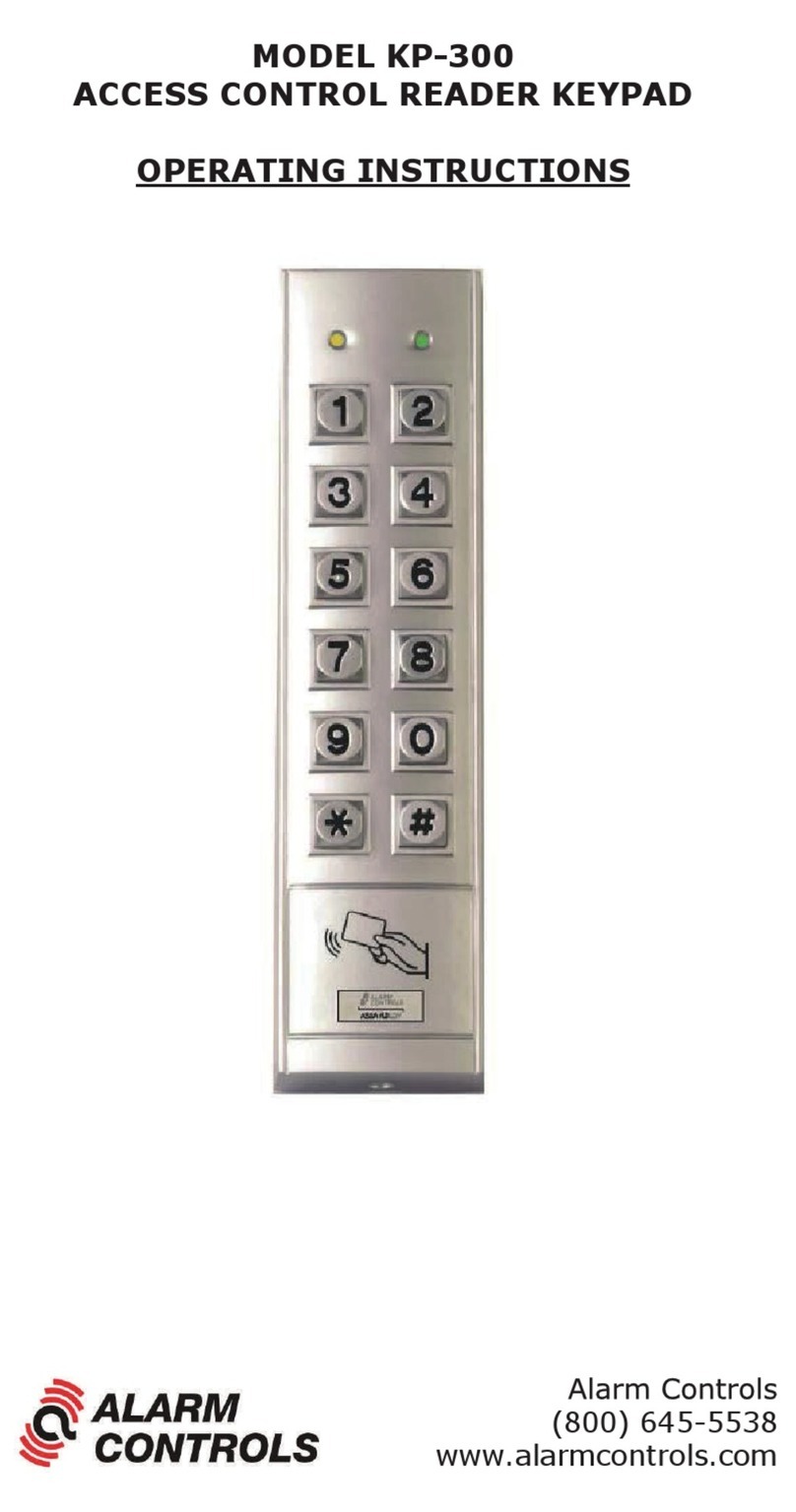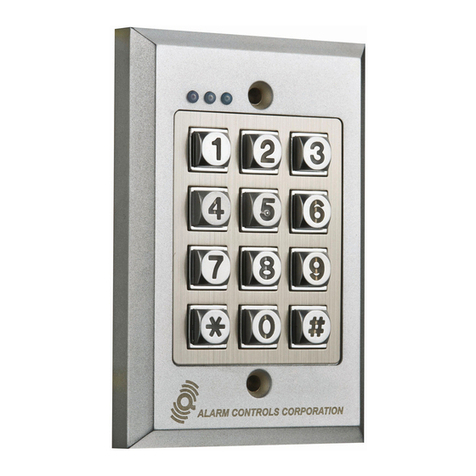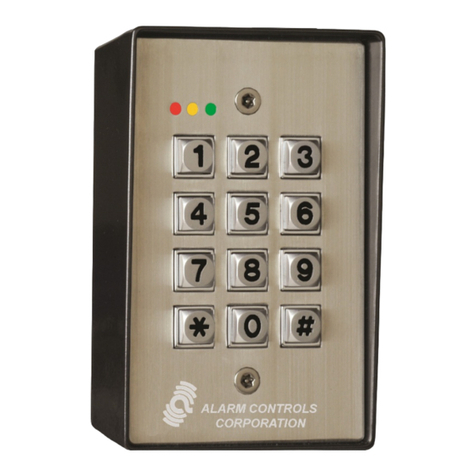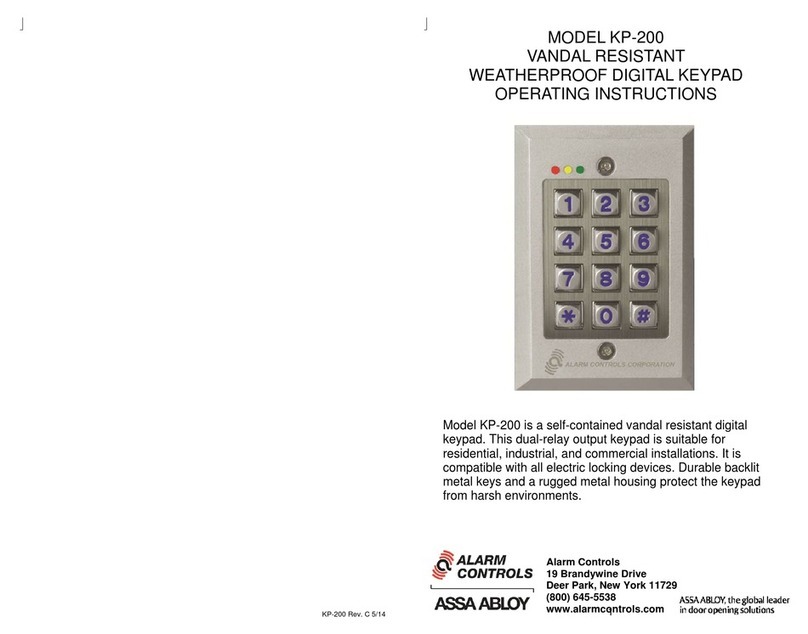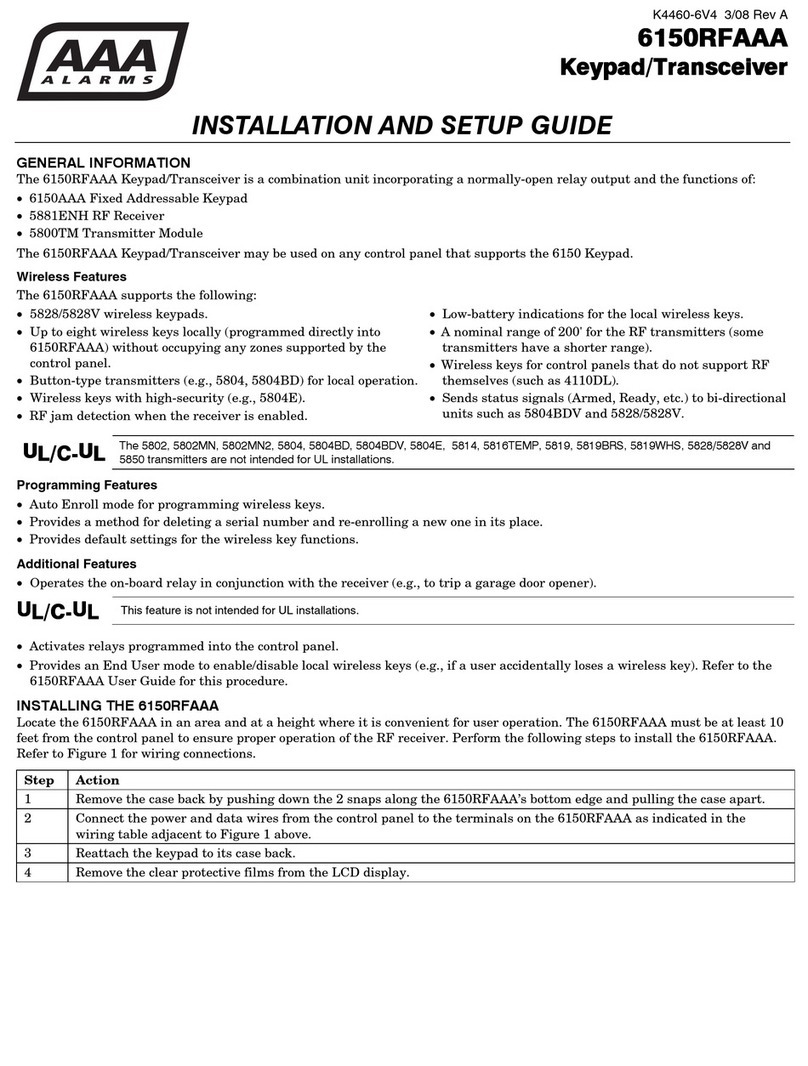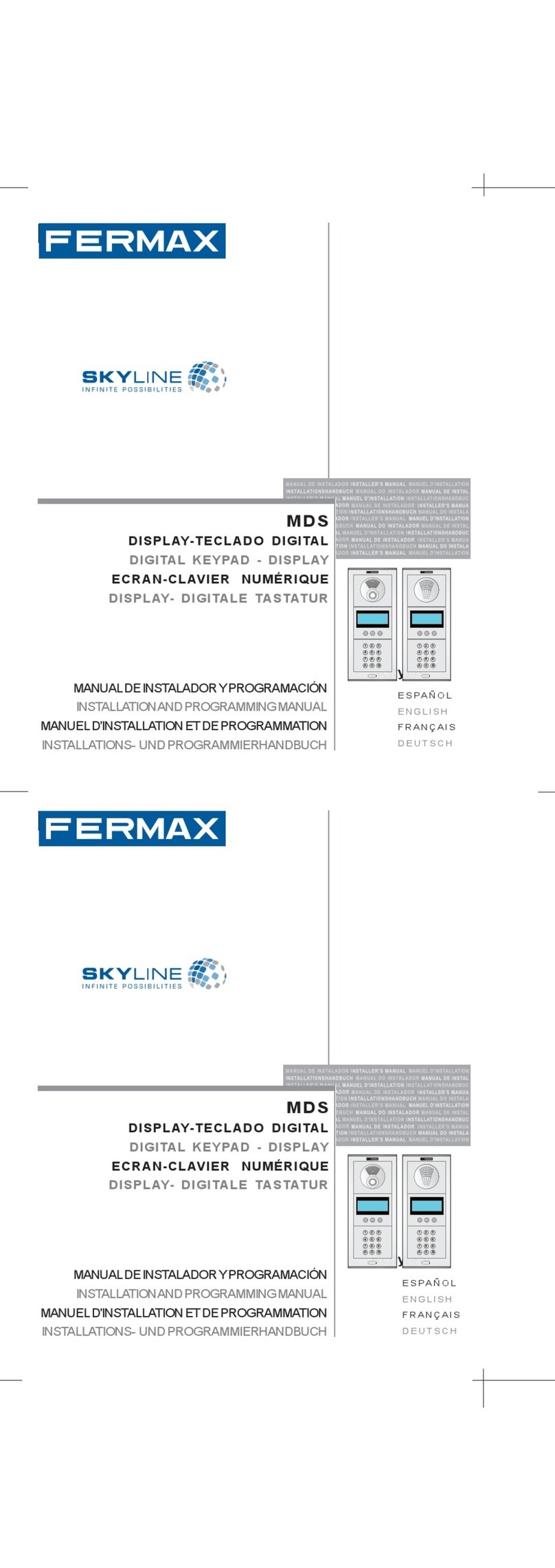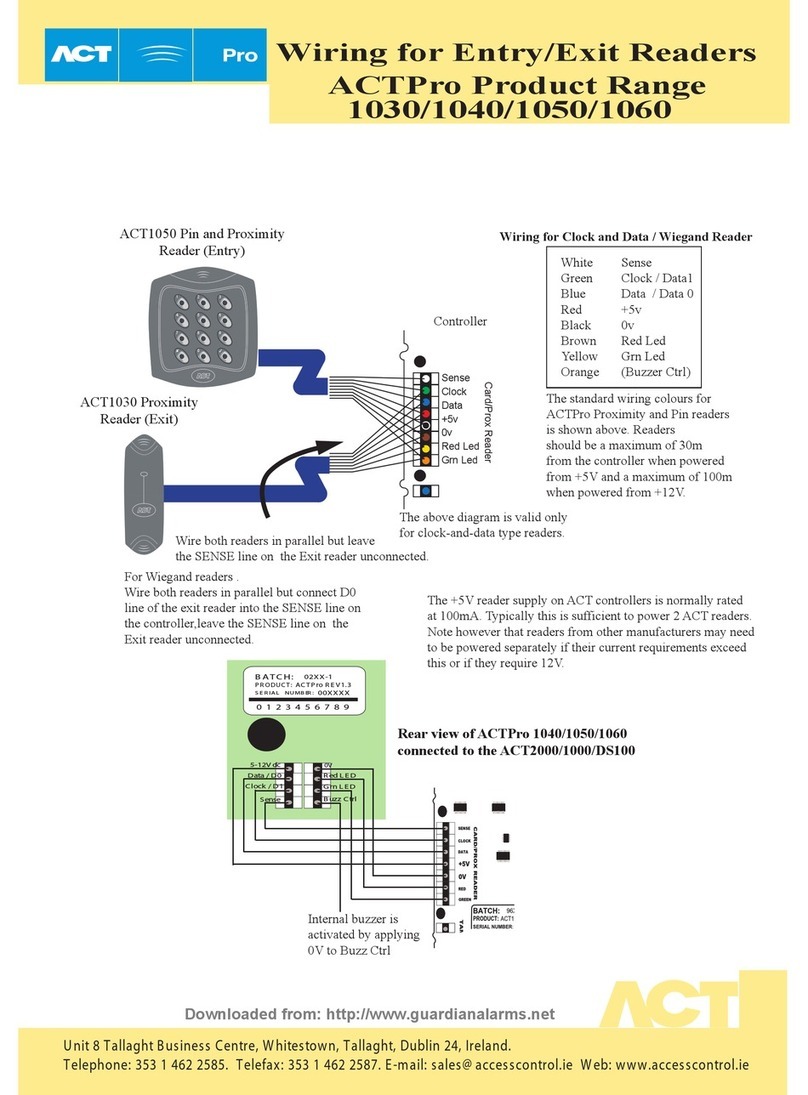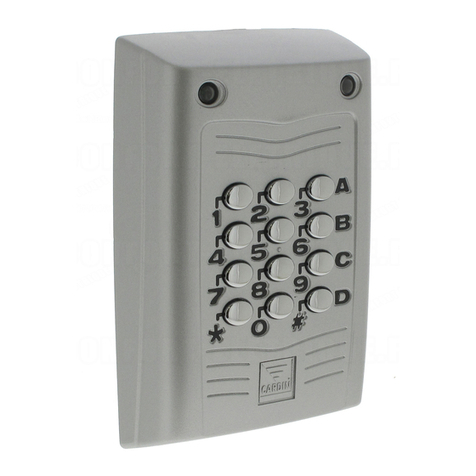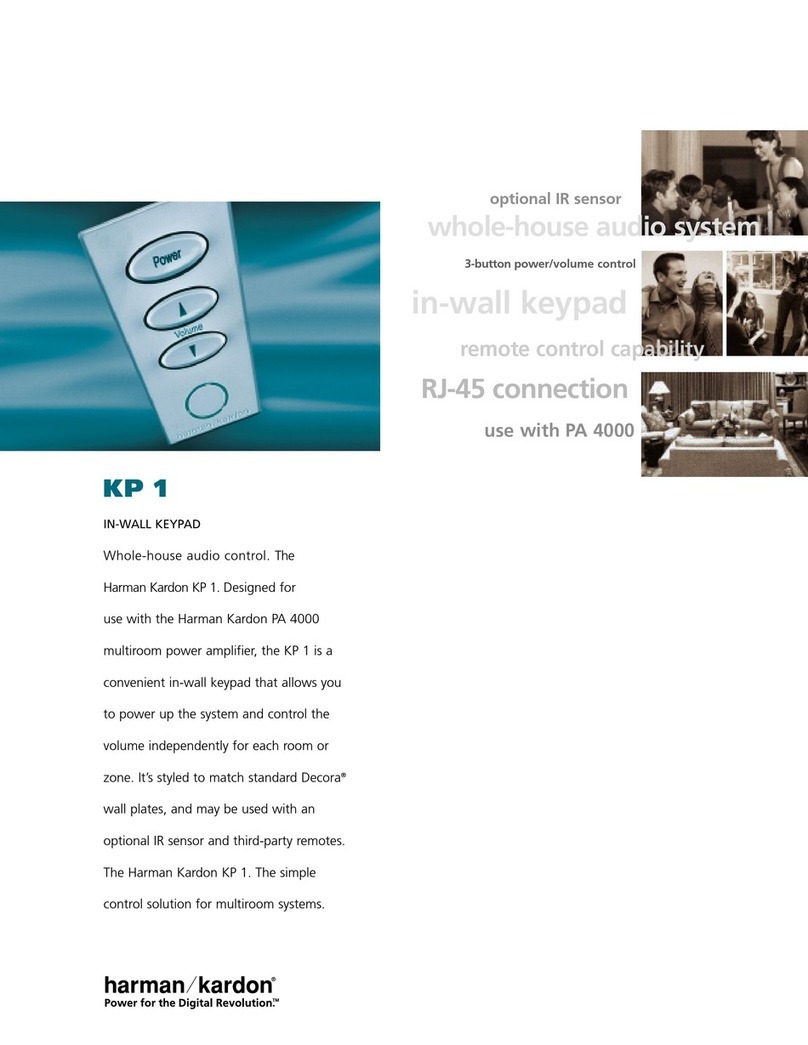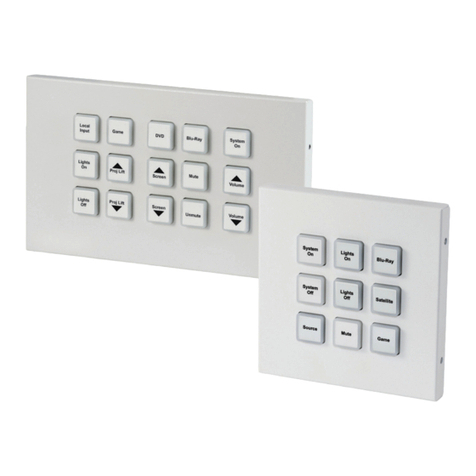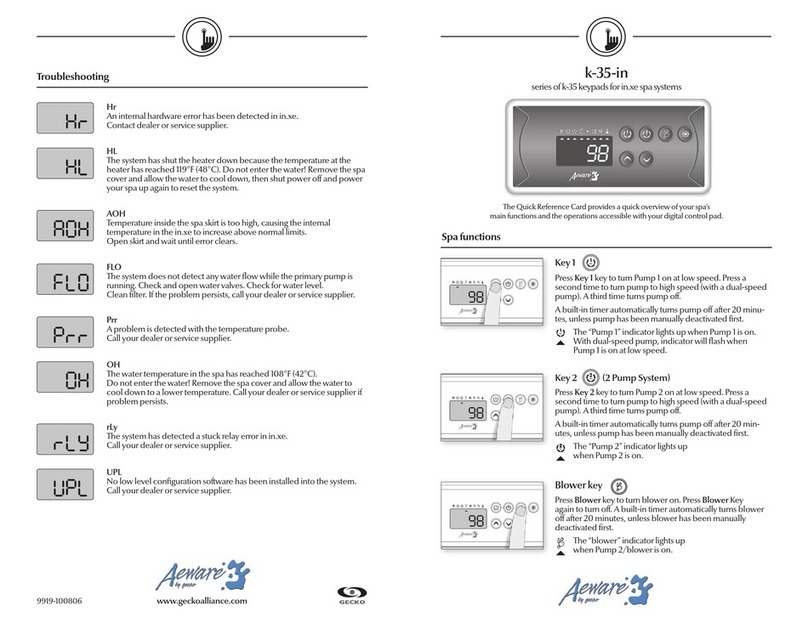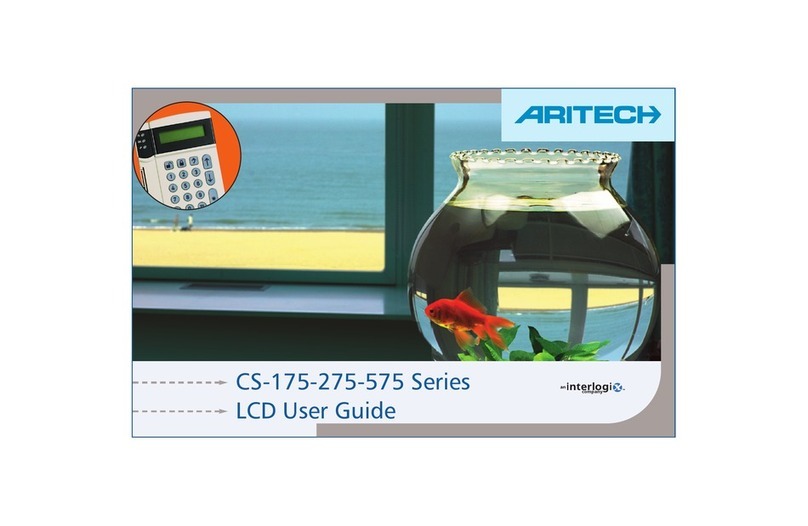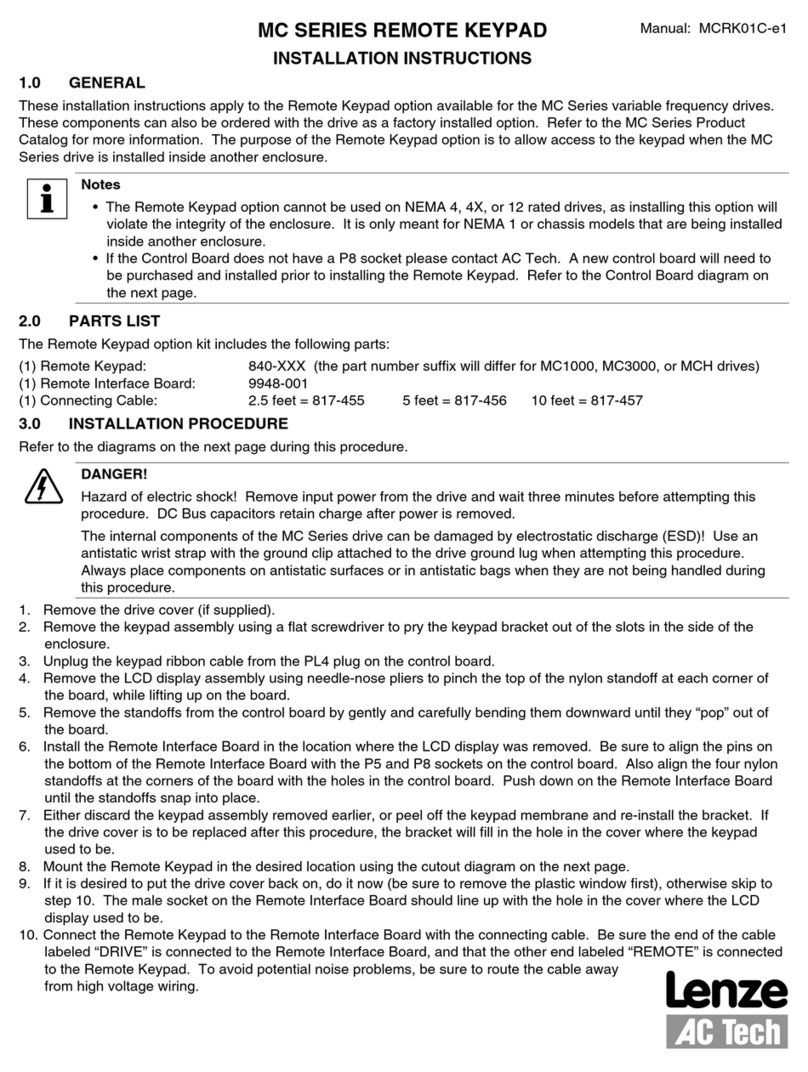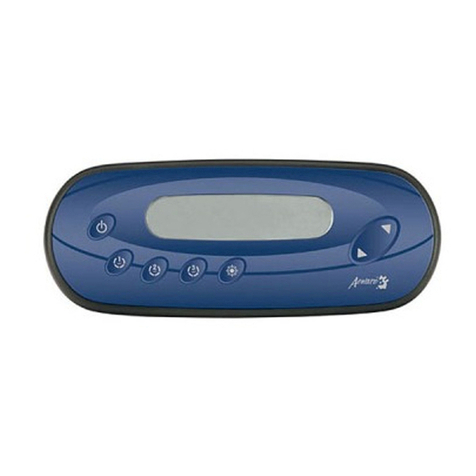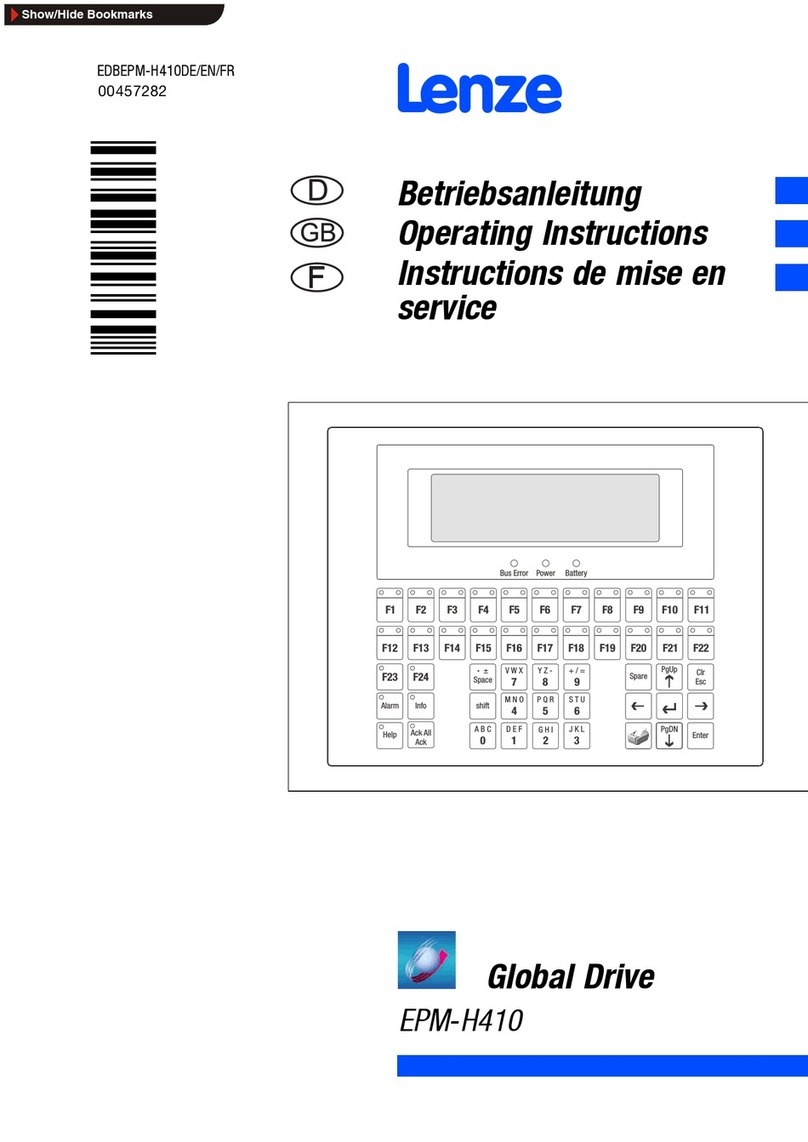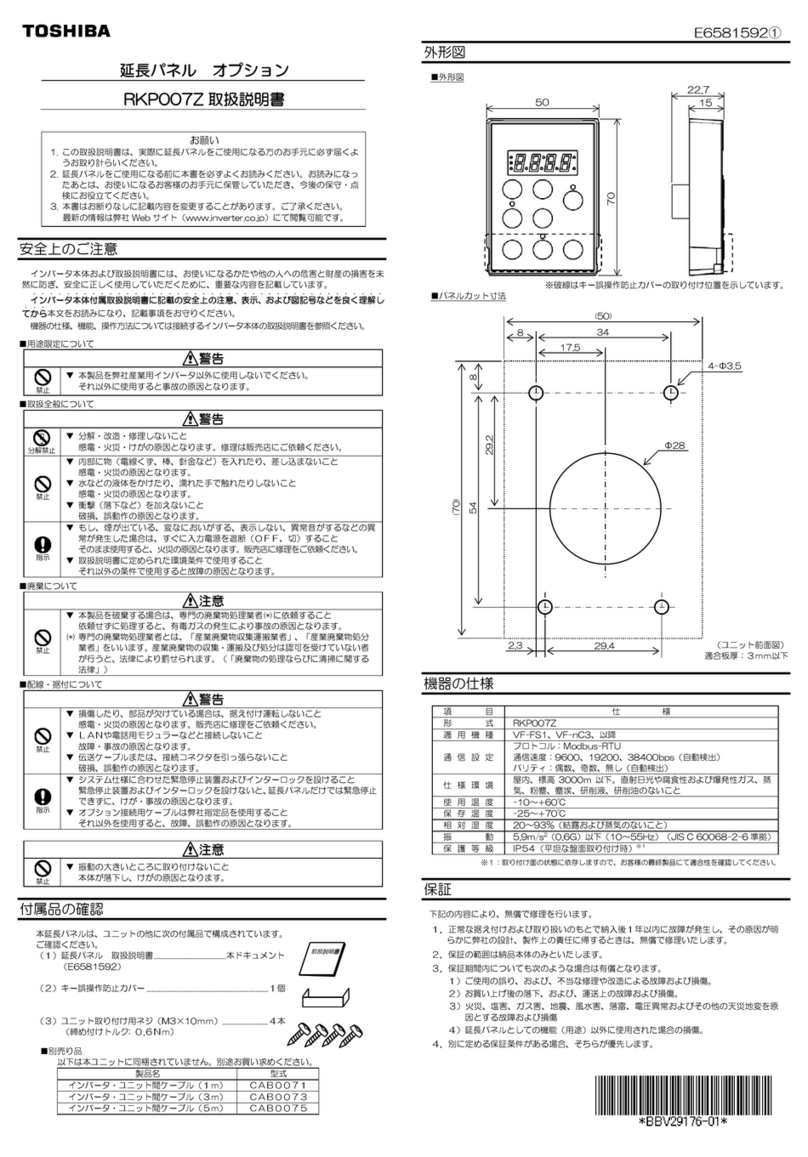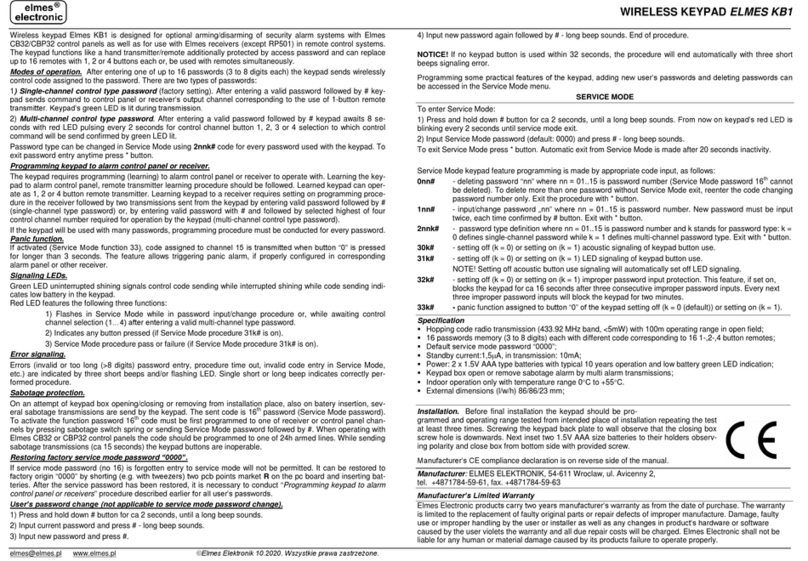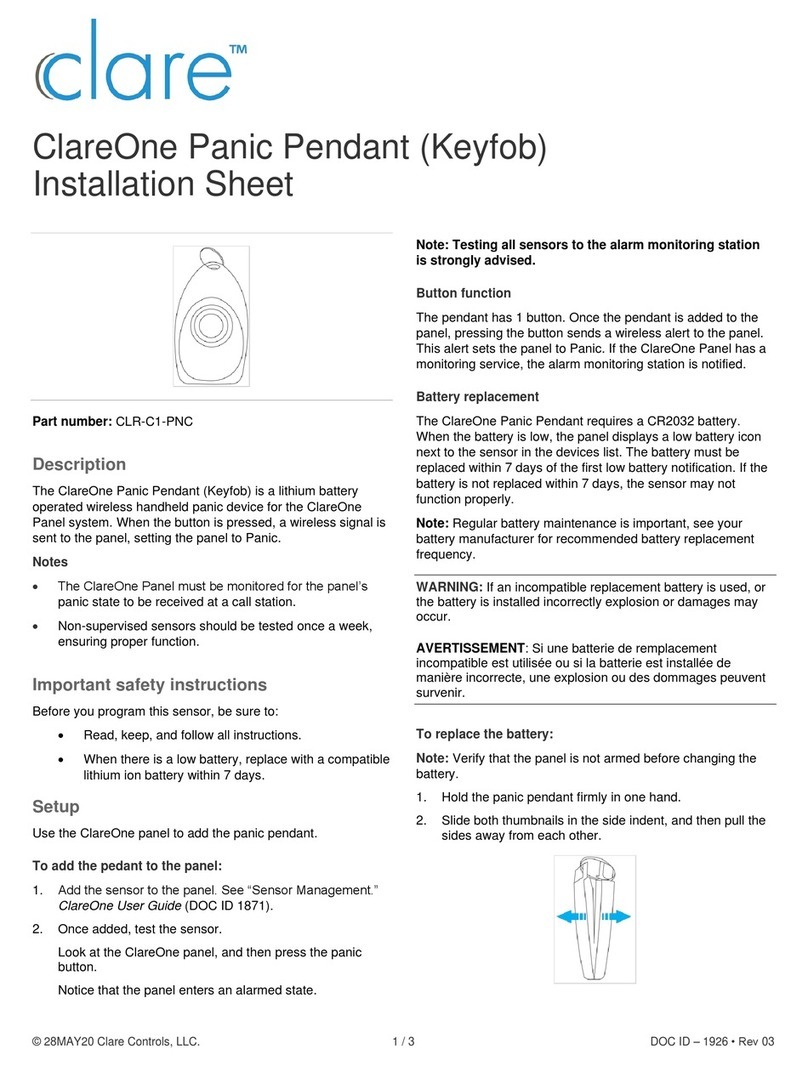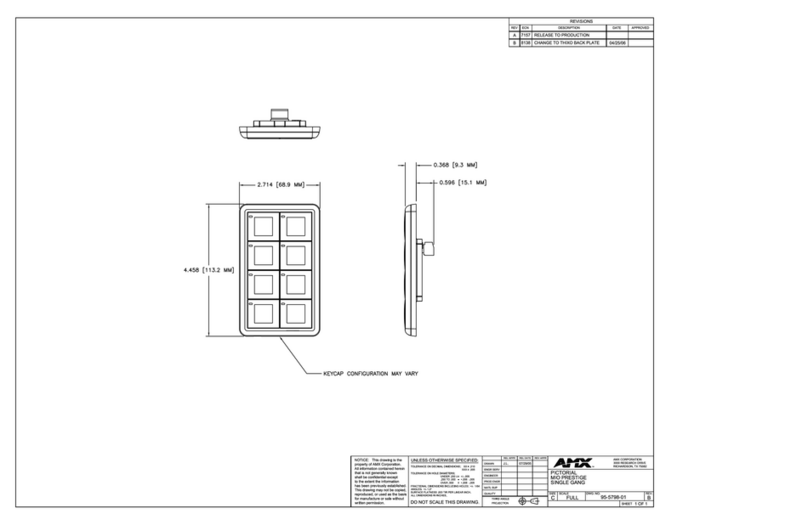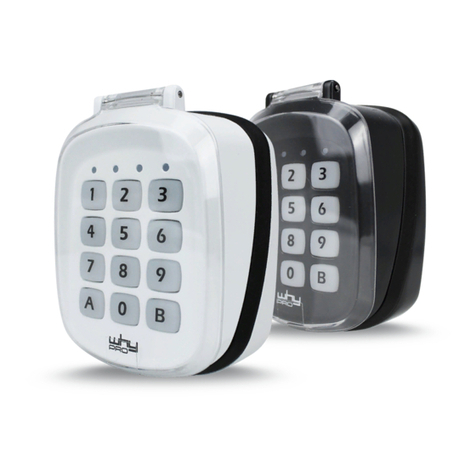TABLE OF CONTENTS
INTRODUCTION
SPECIFICATIONS
INSTALLATION
Precautions
CONNECTION TERMINALS
LED INDICATORS & KEYSTROKE ECHO TONES
On-Board LED Indicators
Keystroke Echo Tone & The LED Signals
PREPARATION FOR PROGRAMMING
A) Criteria for Codes
B) List of User Information
PROGRAMMING AND OPERATION
Power-Up The Keypad
Set Keypad in Programming Mode with One Time Master Code
Direct Access to Programming Mode with The “DAP” Code – 2 8 2 8
System Refreshing with “Refreshing Code” --- 9 9 9 9
The Default Values of The Keypad
Master Code
Supervisor Code
Operation and Functions of The Supervisor Code
User Codes - How to Add or Delete
Visitor Codes
Output Modes & Timing
Personal Safety And System Lock-Out
User Code Entry Mode - Auto or Manual
Keystroke Echo Tones On-Off Selection
Relay Output Operation Announcer
Status LED Flashing On-Off during Standby
Intelligent Egress Button – An Unique Feature of A Contemporary Keypad
Where And Why “Going Out” Needs Attention
Egress Delay , Warning And Alarm
Close Programming Mode
PROGRAMMING SUMMARY CHART
APPLICATION EXAMPLE
BASIC WIRING
Magnetic Lock
Electric Strike
2
······································································································································· 3
···································································································································· 4
········································································································································ 5
············································································································································ 5
···················································································································· 6
·················································································· 7
························································································································· 7
································································································ 7
································································································ 8
······························································································································· 8
····················································································································· 8
··································································································· 9-26
···························································································································· 9
······························································ 9
························································ 10
·········································································· 10
········································································································ 11
·········································································································································· 12
·································································································································· 12
········································································ 13-14
································································································· 15-16
···································································································································· 17-18
··························································································································19
··································································································· 20
······························································································· 21
································································································ 21
······································································································· 22
·························································································· 22
·······································23-24
·············································································23-24
·································································································· 25-26
··················································································································· 270
···························································································· 28-29
···················································································································· 30
······························································································································· 31-32
·······································································································································31
········································································································································32
31
